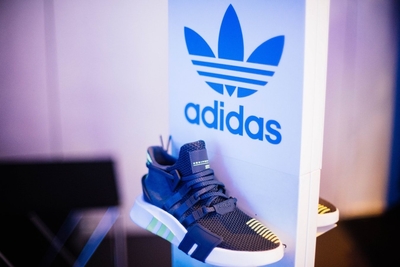The moment we open our mouths, people make snap judgments about us – where we come from, what we like to do for fun, how educated we are, whether we’re confident and extroverted or shy and meek. Sometimes they’re right. Sometimes they’re wrong. Either way, they pick up subtle clues about who we are simply by the way we speak. Our brand voice matters.
The same goes for brands. Just as every person has a unique way of expressing themselves, so your business should also speak with a unique brand voice. The difference is that while our individual speech patterns are largely unconscious, our business communications should always be carefully crafted.
Every piece of content we create – every advertisement, every blog post, every video, every podcast – says something about who we are and what we stand for. All of those pieces together can define our brands and our brand voice. They reveal how we see the world and determine how the world sees us.
With that in mind, here are 5 steps to finding and training your brand voice.

1) Understand the Power of Your Band Voice
 When it comes to marketing, many entrepreneurs go straight for substance. They dismiss form as a luxury they can afford to neglect. They shouldn’t because they can’t. The truth is that how we communicate is just as important as what we communicate.
When it comes to marketing, many entrepreneurs go straight for substance. They dismiss form as a luxury they can afford to neglect. They shouldn’t because they can’t. The truth is that how we communicate is just as important as what we communicate.
In such a competitive business world, survival often means raising our voice above the crowd. We don’t have to be loud, but we do have to be unique.
Think about a brand’s voice much as you would a human voice and consider for a moment how our speech affects people’s perceptions of us. A voice can command respect. It can evoke pity. It can excite. It can amuse. It can inspire people and spur them to action. It can also bore, frustrate and annoy.
The same dynamics are at work in video ads and blog posts. The medium may be different, but the effect is similar. Think about how you want to come off to your audience, and work toward cultivating a voice that creates the right impression. Branding doesn’t have to be complicated, but it should be intentional.
2) Define Your Personality
If your brand were a person, who would it be? How would it act? What would it say? Would it go to bed at 10 pm or stay out until dawn drinking tequila? Would it drive to the beach on Saturdays or would it curl up in an armchair with a book and a mug of hot cocoa?
If you don’t yet have a well-established company culture, start with yourself. Define your character in three words, then ask people you know to do the same. Next, research your target audience and draw up archetypes – profiles of your typical customers. Give each one a name, a career, an income level, hobbies, and mood swings.
Somewhere between your own personality and that of your audience, you’ll find the sweet spot. For many small businesses that rely on niche marketing, the two are very similar. If you’re having trouble splitting the difference, always side with your customers.
Fill in the Blanks
I am / my brand is / my customers are _________:

– Sincere: Honesty is your trademark. Trust is your goal. Dependability is your way of life.
– Authoritative/Competent: You know your stuff. You’ve mastered your field. People turn to you for insight and advice.
– Fun: You’re the life of the party. You can always bring a smile to people’s faces.
– Inspiring: You can get almost anyone to do and be better than they thought possible.
– Witty: You’re sophisticated and droll. You have humor, intelligence, and savoir-faire in equal measure.
– Edgy: A raunchy joke here, a politically incorrect statement there – you’re never afraid to stir the pot.
– Rugged: You know how to pitch a tent on the side of a mountain and start a fire by rubbing two sticks together. The phrase “off-the-grid” thrills rather than frightens.
3) What Mood Do You Want to Create?
You can use voice to stir almost any emotion. The question is, how do you want your target audience to feel, and most importantly, how do those feelings fit with your product and serve your business goals?
Fill in the Blanks
After encountering my brand, I want my target audience to feel _______:

– Excited: Whether you sell dirt bikes, organize river rafting trips, or make hot chili, you might need to generate some excitement in order to make a sale.
– Relaxed: Want people to book a Swedish massage or buy natural sleeping aids? It might be a good idea to put them in the mood with a calming, soothing tone of voice.
– Inspired: Whether you sell sports gear, make greeting cards, or offer microloans to women in impoverished countries, inspiration can work for many different brands.
– Intrigued: Do you sell online courses, write nonfiction books, or produce podcasts? Get your audience thinking, and they’ll want to know more.
– Amused: You don’t have to be a comedian to make comedy work for you. Just be sure to choose the kind of humor that fits your image, whether that be cute or edgy, sweet or naughty.
4) Get Inspired by the Greats
If you’re having trouble wrapping your mind around the idea of brand voice, then it might be time to follow in the footsteps of the industry giants that have mastered the art of expression. Here are just a few:

– Nike: Pure inspiration, from their famous “Just Do It” tagline to their “Real MVP” Father’s Day promotions. Look at almost any piece of copy from the sportswear giant and you’ll find words like inspire, icon, historic, believe, and strong.
– Charmin: Fun. Charming. This beloved brand manages to turn bathroom humor into something warm, soft and cuddly, just like the cartoon bears that appear on every pack of toilet paper.
– Mailchimp: The B2B company manages to be funny in a clever way. The charming and cultured wit of its content strikes the perfect balance between professionalism and approachability.
– Samuel Adams: Instead of playing up the party angle, this brewery sticks with a down-home sincerity that appeals to their customer base. Scan their site and you’ll see a lot of references to hometowns, camping, comfort, and the craft of brewing. Sometimes they inspire, sometimes they inform, but they’re always genuine and down-to-earth.
5) Don’t Sound Authentic, Be Authentic
 The word “authentic” has been bandied about so much in the marketing world, it has become something of a cliché, but don’t let that blind you to the underlying concept. Authenticity is at the heart of trust, and trust is key to any business.
The word “authentic” has been bandied about so much in the marketing world, it has become something of a cliché, but don’t let that blind you to the underlying concept. Authenticity is at the heart of trust, and trust is key to any business.
The first rule of authenticity: Be intentional, but don’t try too hard. People can tell when you’re putting on an act and most can smell a fake from a mile away. Also remember that what works for another company may not be right for your company. You may love the way a famous brand touts its social awareness, but if you don’t yet do a lot of social outreach, trying to mimic their approach may strike a false note.
Raise Your Brand Voice
We may not speak the same way at a business meeting as we do at a bar, but no matter where we are or what we’re doing, people can identify us by our voices. Similarly, a Facebook ad promoting your newest product may have a different tone than a newsletter celebrating your favorite charity, but there should be a common quality running through both. That quality is brand voice, and it’s important to find yours before launching your first (or next) campaign.
Whether you need help locking down your brand’s voice or want to share it with the world, National Positions is ready to help.
